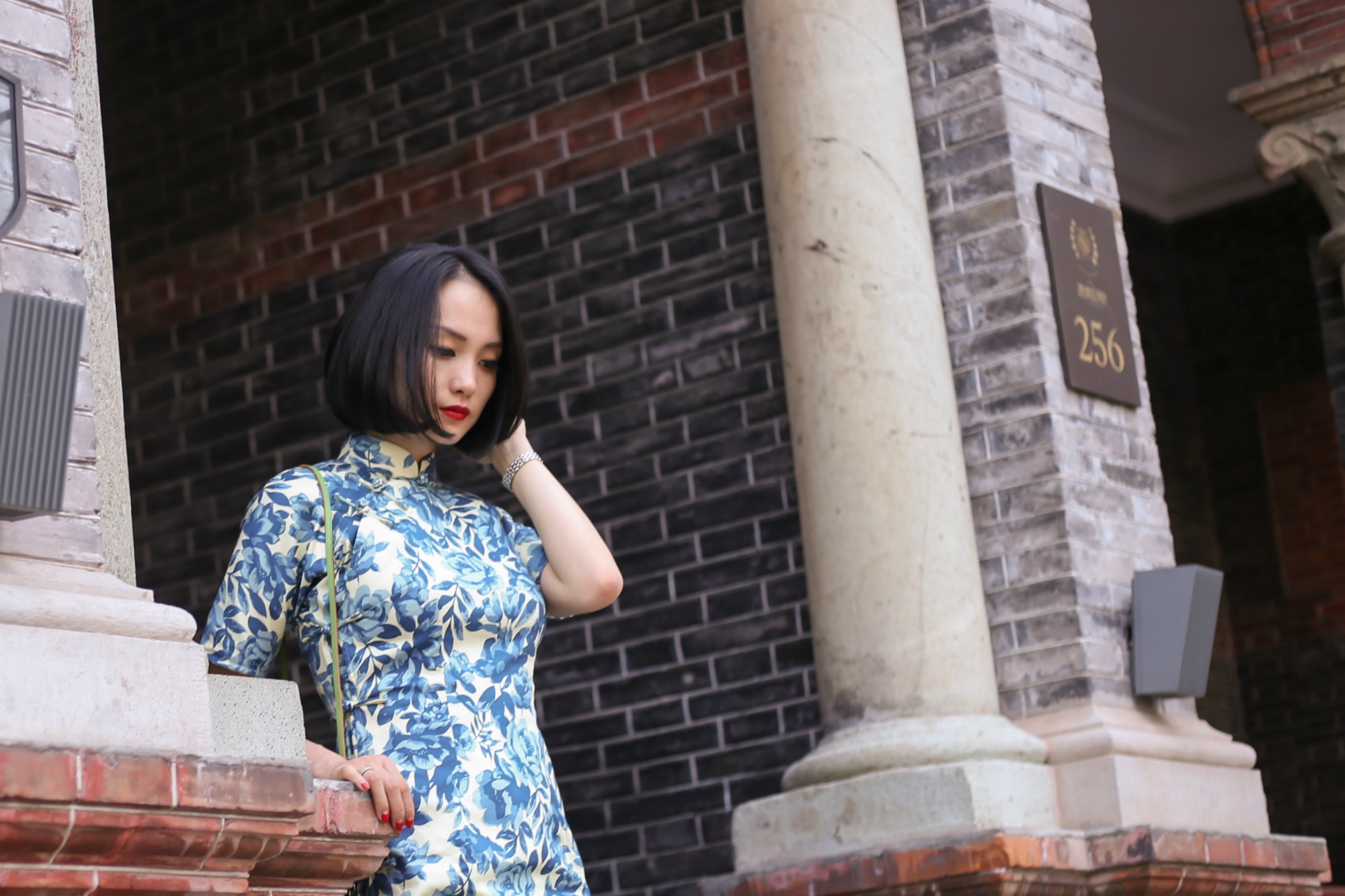
Blue and white is one of the most versatile colour combinations, and this qipao combines this with my favourite floral print. I call it a Chinese porcelain inspired qipao, as it reminds me of the famous blue and white porcelain.
Spring is definitely in the air! Well on and off anyway… it’s been a month of sporadic chills followed by clear sunny days, and one of those days was warm enough for me to return to Sinan Mansions for a twirl in this blue and white Chinese porcelain inspired qipao.
A few words on blue and white Chinese porcelain (青花瓷)
I had always thought blue and white porcelain was quintessentially Chinese, but it was not until I started researching it in preparation for this post that I realized I was wrong, well at least partially.
Porcelain, a fine, translucent type of ceramic also commonly called China, did in fact originate in China. But the ornate blue and white patterns did not become popular until the Mongol-ruled Yuan dynasty (元朝 1271-1368). Prior to this, subtler designs such as celadons (a pale green glaze) were considered more tasteful.
The blue pigment that began to be used in Yuan dynasty was in fact made from cobalt imported from Persia (in Chinese 回回青, “Islamic Blue”). The elaborate designs of many blue and white porcelain from this era was also highly influenced by Islamic art. In turn, a large proportion of the porcelain produced was exported to the wealthy Islamic market, and the Islamic-Chinese inter-relationship in porcelain blossomed for quite some time. In reflection, it all make sense – of course the ornate, dense designs bore many similarities to rich Islamic designs, why hadn’t I spotted it before?
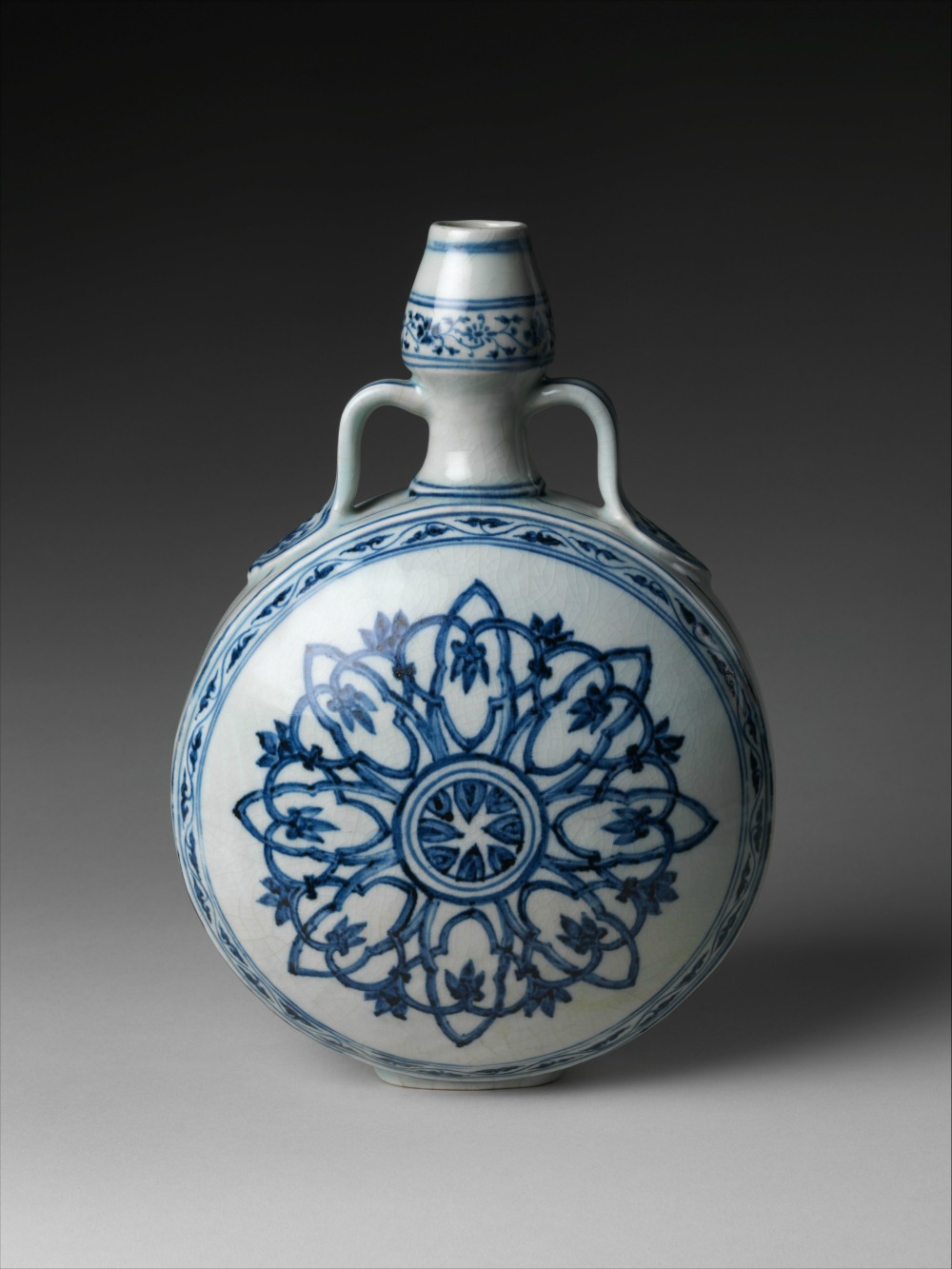
A clear example of the Islamic influences on blue and white porcelain, obvious in both the shape and pattern of this early 15th century flask (MET Museum)
The material used to produce porcelain was called kaolin. In the 14th century, a place rich in kaolin called Jingdezhen (景德镇/景德鎮), Jiangxi Province, became the porcelain production capital of China. And over time, as porcelain became more and more popular, not just through the Middle-East, but also in Europe, Jingdezhen mass exported to the world. The blue and white porcelain remained popular through to the 18th century, and for almost all of this time China dominated its production.
And this, is how an Islamic-inspired art form became a part of China’s DNA.
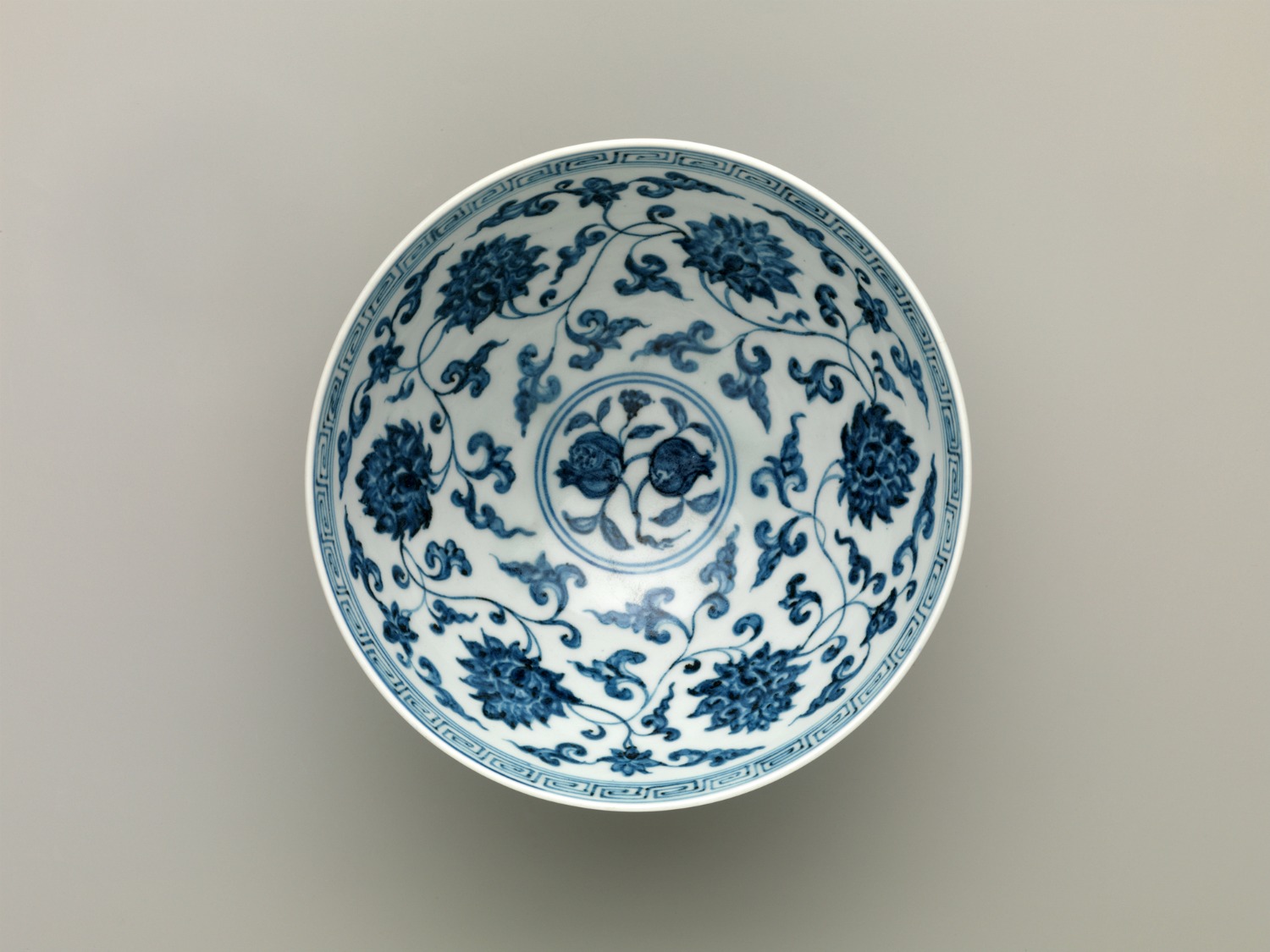
This floral plate bears more of a “Chinese” design, with Peonies, Narcissus and Pomegranates (MET Museum). Florals designs are common in blue and white Chinese porcelain, and why I call this dress a porcelain inspired qipao
The Chinese porcelain Qipao
This qipao is made from a medium weight cotton, with a white base and printed blue flowers all over. It is a similar design to my red qipao, with a low 4cm mandarin collar (about 1.5 inches), and a single sided large round front, buttoned up by simple straight pankous all down the right hand side.
However it is a little less formal than the red dress: the hemline is shorter and falls just below the knee; and the sleeve length is my favourite – a classic mid-sleeve, falling about 5cm (or 2 inches) above the elbow.
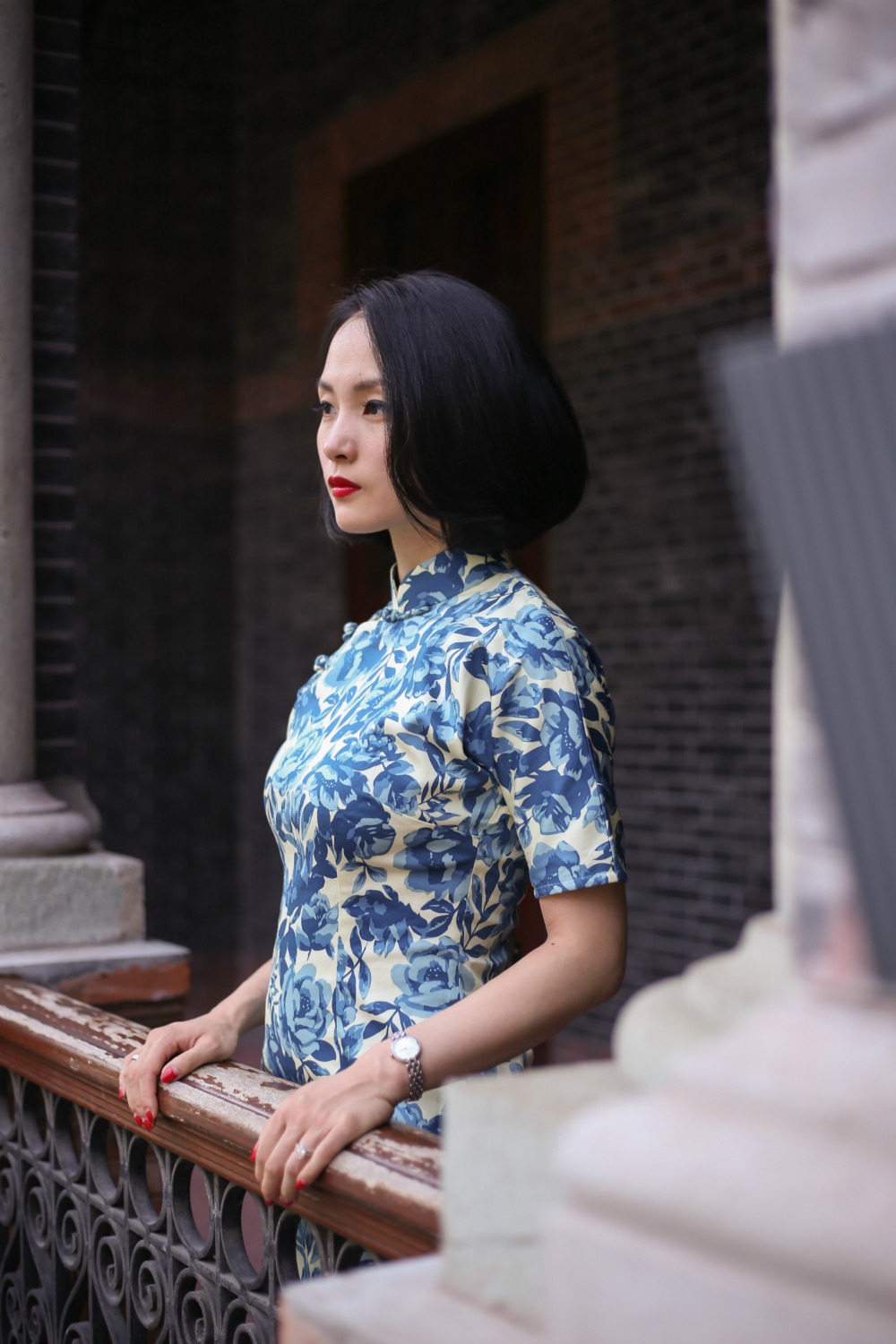
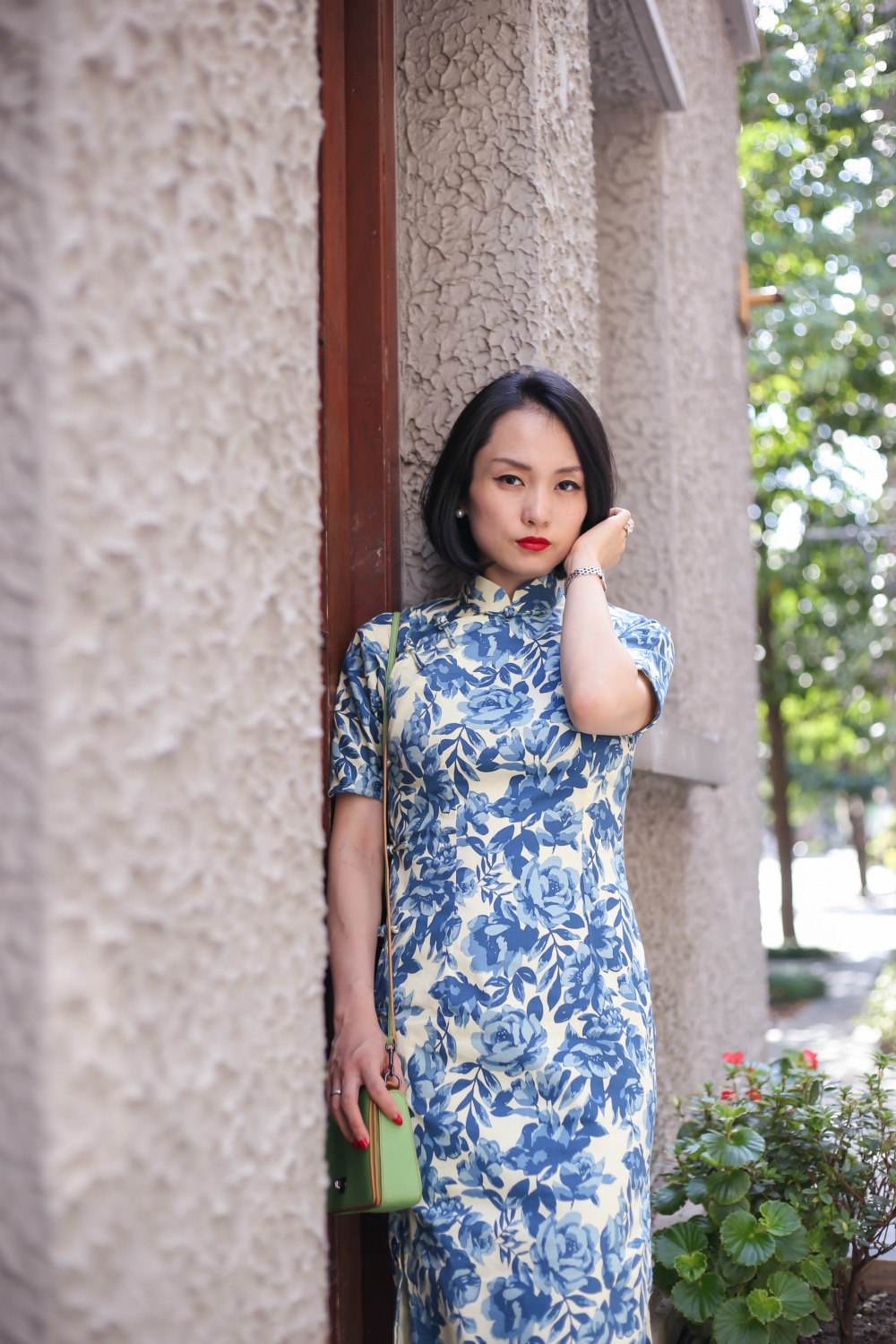
Blue in its darker tones is an incredibly versatile colour. In fact, I think it is much more sophisticated than black in most instances, and not quite as serious. So this qipao is also very easy to wear – it can be paired with almost any solid colour bag, like I did with a mint green bag. But I think it would be also be great with warm colours like a red or dark yellow, and of course an easy match with the more common handbag colours like black, white or the taupe family.
Are you a fan of floral prints? And what about on a qipao? Let me know what you think, and stay tuned until next time –
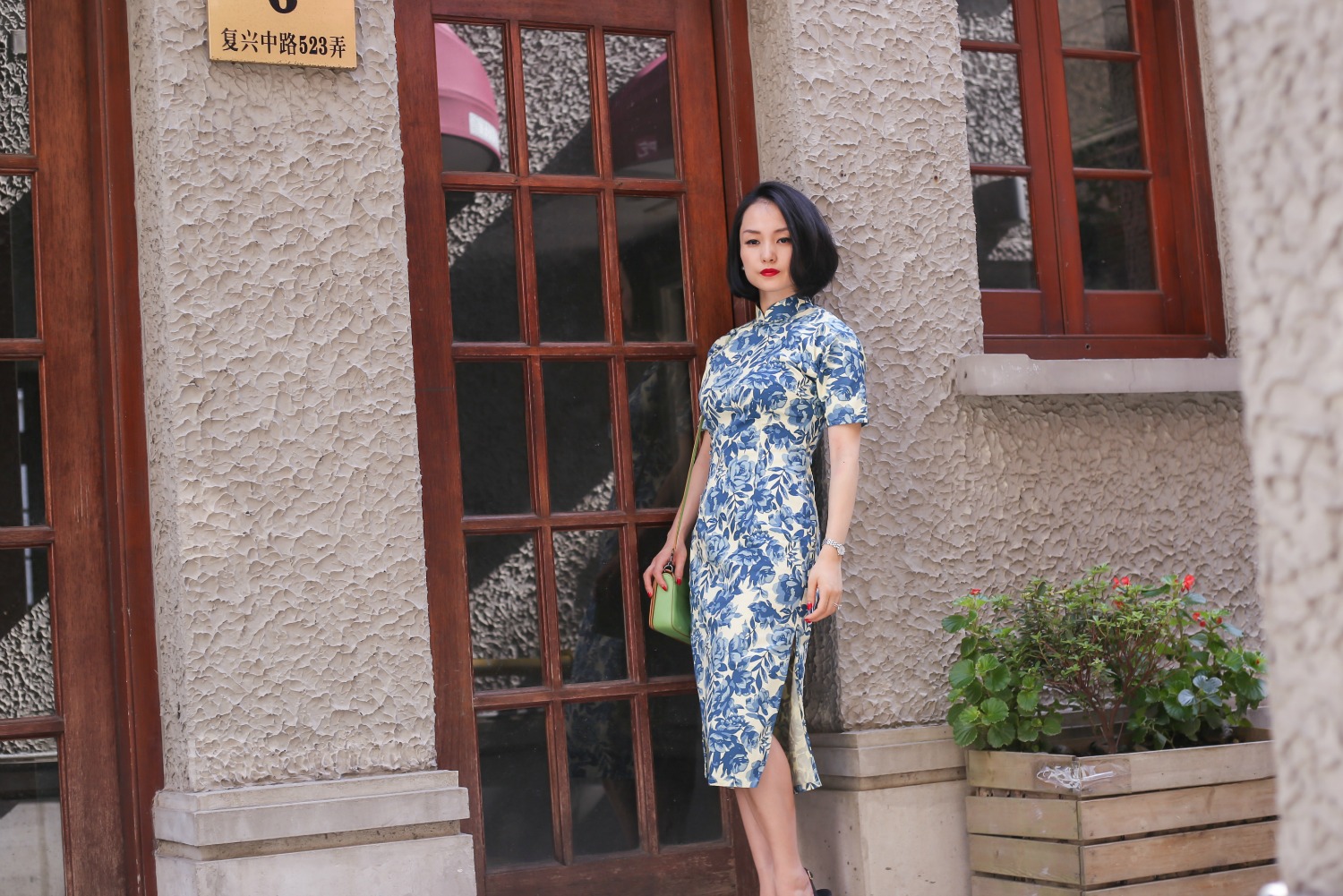
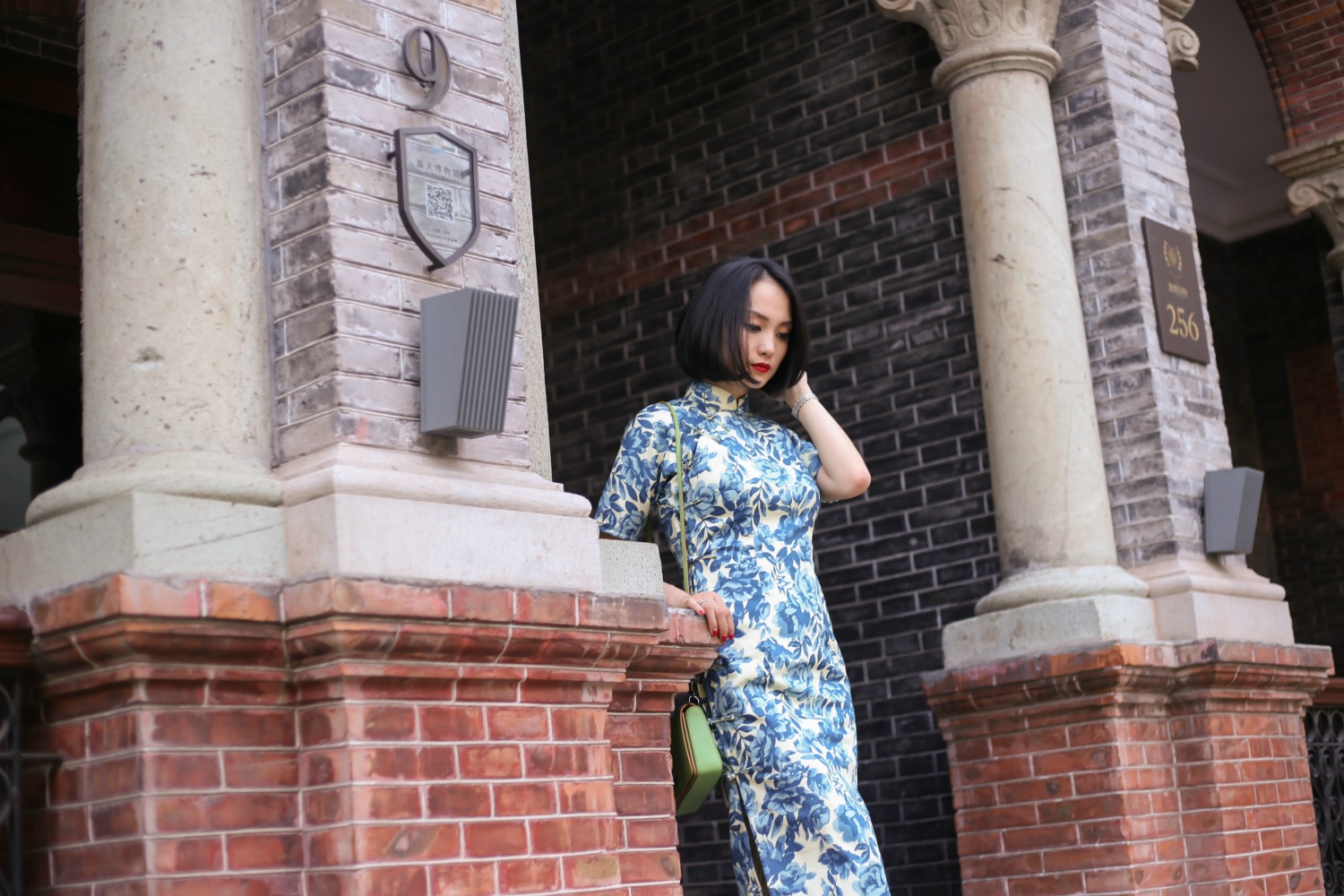
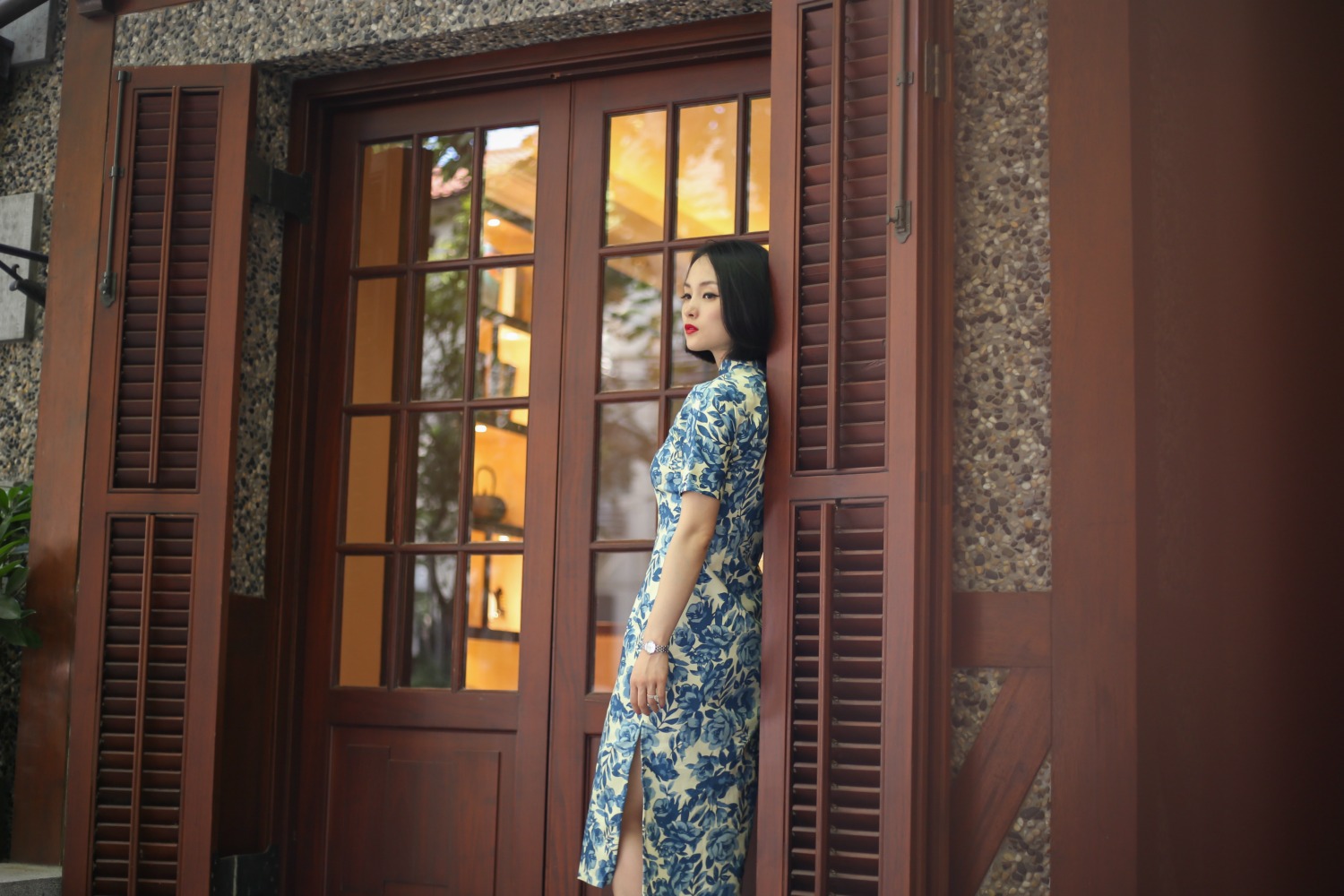
Leave a Reply